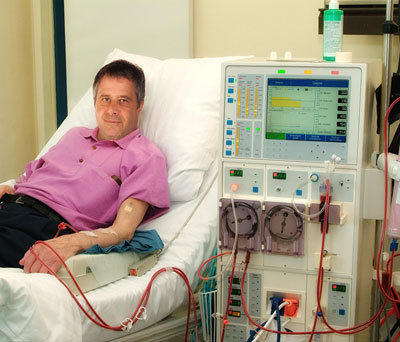About dialysis
4 million patients with end-stage kidney disease who cannot receive a transplant or who are on the waiting list depend on dialysis for survival. This number is increasing because of aging and growing prevalence of diabetes and obesity.
Most dialysis patients are treated in a clinic/hospital by hemodialysis three times a week in a 4 hour session. It is lifesaving but with severe drawbacks. It requires 160 hospital days/year disrupting economic activities, patients suffer from a high pill burden and healthcare costs are high.

Need for home dialysis
Home dialysis is seen as a solution to halt rising costs, reduce pressure on the healthcare system and to provide flexibility for the patient. Peritoneal dialysis is the primary home dialysis modality. Toxins and excess water are removed across the peritoneal membrane into a dialysate filling that is introduced in the peritoneal cavity.
This therapy is elegant since it provides continuous dialysis while the patient is free to move during the day. However it is currently less efficient than hemodialysis and has limited technique survival (peritoneal membrane suffers from glucose load). This hinders large scale application sofar.
A new technique
Nanodialysis introduces Weakid, a new technique that eliminates the current drawbacks of peritoneal dialysis.

We make life easier on dialysis
